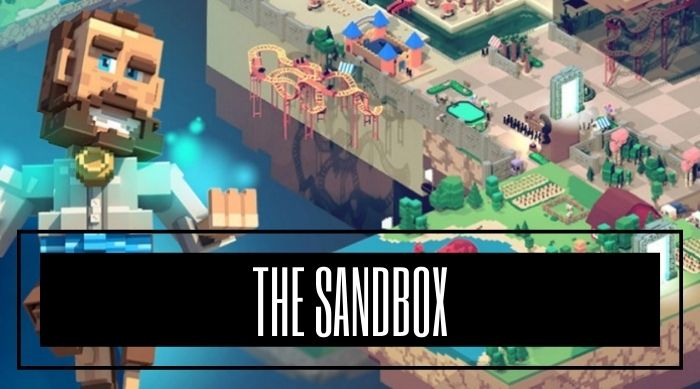Are you interested in all things NFT but not sure where to start with minting, buying, and selling them? There are plenty of NFT projects run and supported by crypto-savvy investors and collectors but what about people who do not yet have the skills or the experience to create projects and grow interest in them?
Enter The Sandbox, an Ethereum-based NFT gaming metaverse that helps those who aren’t well-versed in crypto to make and sell their own NFTs that can be used in virtual reality games.

What Is The Sandbox?
The Sandbox was founded by Arthur Madrid and Sabestien Borget. Both co-founded Pixowl, which was started as a game company focusing on mobile games with character-driven storylines.
This project made waves by partnering with name brands, performers, and popular television shows. The Sandbox has worked with projects including The Walking Dead, Smurfs, and Atari. Some of the hype around The Sandbox may have to do with its virtual concerts featuring performers like DeadMau5 and Snoop Dog. The Sandbox has raised over $90 million thanks, no doubt, at least in part due to such efforts.
The Sandbox takes that idea a step further by empowering those who don’t have much or any experience with NFTs, letting what some describe as “non-tech savvy users” to make virtual reality NFTs.
The Sandbox token SAND powers the in-game ecosystem for the Sandbox metaverse and its users provide the content–without needing the skills to write code.
The World of The Sandbox
You’ll read The Sandbox described as a virtual world, but also as an ecosystem which includes separate programs for creating in-game experiences as well as NFT game assets. There’s also a Sandbox marketplace to see these projects.
The virtual world is not a single game experience; due to the user-centric approach to this ecosystem it’s possible to have many different games or even different types of games at work at the same time.
When making characters for the game, or any other object that is described as an “in-game asset”, you can mint an unlimited number of that asset as well as making any number of unique assets using random or assigned attributes. The more attributes a character or object has the more potentially valuable it may be.
Assets can be assigned a “scarcity” rating with tiers including “Common”, “Rare”, “Epic” and “Legendary”.
Who Can Use The Sandbox?
When you participate in The Sandbox as an asset creator, you do so after being vetted or approved for admittance into something called the Creator Fund; only those who belong to this fund can upload Sandbox assets or sell in the Marketplace. Players, on the other hand, don’t have to be admitted to the Creator Fund to buy assets or enter the virtual world.
The good news is, you do not have to engage in buying or selling in order to get some experience using Sandbox. The Game Maker resources are open to anyone to use for free. But in order to publish your game or your assets so that other people can participate in your own NFT or game project, you must buy LAND, or digital real estate in The Sandbox.
More than 150,000 individual parcels of LAND are expected to have gone up for sale since the advent of the project and you don’t have to purchase land in order to use it–there is actually a LAND rental market, and you can even purchase multiple LANDs and create an ESTATE.
About SAND: The Sandbox Token
The Sandbox uses an ERC-20 utility token called SAND, and in order to buy and sell things like LAND you will need to have the Sandbox token in a digital wallet. SAND is also a governance token and those who hold it will have rights to participate in decisions about the direction of the project as well as the ability to transfer voting rights if the owner of the token chooses to do so.
Some sources report the Sandbox market cap somewhere between $4 and $5 billion, and there are some 3,000,000,000 SAND tokens that could ultimately wind up in circulation.
SAND can be bought, sold, and traded at cryptocurrency exchanges such as:
- Crypto.com
- Gemini
- Uniswap
- Kraken
Joe Wallace has covered real estate and financial topics, including crypto and NFTs since 1995. His work has appeared on Veteran.com, The Pentagon Channel, ABC and many print and online publications. Joe is a 13-year veteran of the United States Air Force and a former reporter for Air Force Television News.


